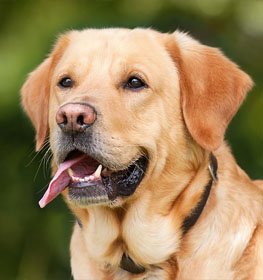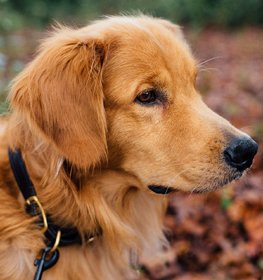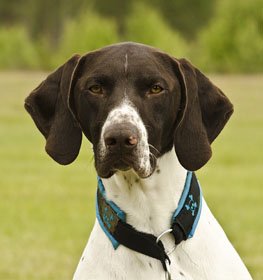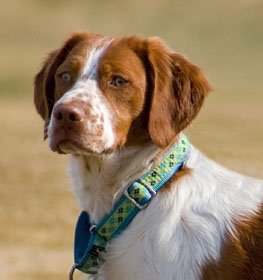Chesapeake Bay Retriever Information & Dog Breed Facts
Collection of all the general dog breed info about Chesapeake Bay Retriever so you can get to know the breed more.
| Group | Gun Dog |
|---|---|
| Popularity Rank | 43 |
| Reviews | 2 |
| User Ratings | |
|
Compare the Chesapeake Bay Retriever With Other Dogs
Select at least one dog breed to make the comparsion. | |
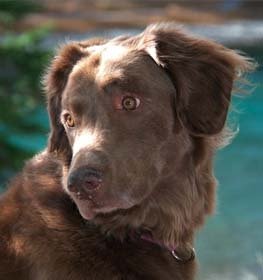 | |
| Origin | |
|
Common Names & Aliases
What other names is a Chesapeake Bay Retriever known by? Discover all traditional, regional and informal names used for this breed. | ChesapeakeChessie |
|---|---|
|
Breed Classification
What type of dog breed is a Chesapeake Bay Retriever? Learn about its genetic classification and breeding category. | Purebred |
|
Size Classification
What size category is a Chesapeake Bay Retriever? Learn how big the Chesapeake Bay Retriever breed typically grows. | Large |
|---|---|
|
Weight Statistics
How much does a Chesapeake Bay Retriever weigh? Discover typical weight ranges for adult males and females of the Chesapeake Bay Retriever breed. | Male: 65-80 pounds (29-36 kg), Female: 55-70 pounds (25-32 kg) |
|
Average Weight
What is the average weight of a Chesapeake Bay Retriever? | Male: 72.5 pounds (32.5 kg), Female: 62.5 pounds (28.5 kg) |
|
Height
How tall is the Chesapeake Bay Retriever? Chesapeake Bay Retriever height: | Male: 23-26 inches (58-66 cm), Female: 21-24 inches (53-61 cm) |
|
Average Height
What is the average height of a Chesapeake Bay Retriever? | Male: 24.5 inches (62 cm), Female: 22.5 inches (57 cm) |
|
Price Range
How much does a Chesapeake Bay Retriever puppy cost? Find current market prices and factors affecting Chesapeake Bay Retriever costs. | $500-$600 If you choose to purchase the Chesapeake Bay Retriever, you should know that the mentioned amount of money is an average of the collected data from breeders’ sites and puppy finder places. If you have a Chesapeake Bay Retriever for sale, please advertise it on a reliable website to make sure the Chesapeake Bay Retriever gets to a happy place. |
|---|---|
|
Availability
How easy is it to get a Chesapeake Bay Retriever? How many Chesapeake Bay Retriever are there in the world? | Very frequent: The Chesapeake Bay Retriever is quite easy to get. There is a risk of overbreeding, as it is an extremely popular breed. Inbreeding is common because of its popularity. A new study suggests that inbreeding contributes to the incidence of disease and health problems. So be careful, buy from a trustworthy place or kennel and seek the help of an experienced person, a professional, to make the right decision. |
|
Intelligence Rating
How intelligent is a Chesapeake Bay Retriever? Discover the Chesapeake Bay Retriever's intelligence ranking and learning capabilities. | Smart: The Chesapeake Bay Retriever dogs have great intelligence. They understand and memorize new commands in 15-25 repetitions.
The Chesapeake Bay Retriever is among the smartest dogs in the intelligence ranking. |
|---|---|
|
Training Difficulty
How easy is it to train a Chesapeake Bay Retriever? Learn about the Chesapeake Bay Retriever's trainability and response to training methods. | Chesapeake Bay Retriever dogs are quite easy to train. Sometimes they can be challenging, but if you're consistent in teaching new commands they will obey for sure. |
|
Watchdog Rating
How good is a Chesapeake Bay Retriever as a watchdog? Learn about the Chesapeake Bay Retriever's alertness and guarding instincts. | Chesapeake Bay Retriever dogs are average watchdogs. If they sense something different, they will alert you, but observation isn't considered their main job.
|
|
Territorial Protection
Is a Chesapeake Bay Retriever protective of its territory? Learn about the Chesapeake Bay Retriever's guarding instincts and behavior. | Chesapeake Bay Retriever dogs are average defenders. Some dogs are very protective of their territory, while others easily let a stranger to trespass. This breed is not sure to defend its territory in every situation. |
|
Personality Traits
What personality does a Chesapeake Bay Retriever have? Learn about characteristic Chesapeake Bay Retriever temperament and behavior traits. | HappyProtectiveIntelligentAffectionateDominantQuiet |
|---|---|
|
Sensitivity Level
How sensitive are they? Chesapeake Bay Retriever sensitivity: | Chesapeake Bay Retriever dogs have an average emotional level and are not the most sensitive dog breed. Sometimes it's okay to change the daily routine, have guests and listen to loud music.
Some dogs handle moderate punishment very well, while others crumble apart at a dirty look. This breed is not affected emotionally by moderate punishment. |
|
Affection Level
How affectionate are they? Is a Chesapeake Bay Retriever a good family dog? | Average: Chesapeake Bay Retriever dogs are average dogs regarding their affection level. Some breeds are forthcoming and friendly, while others are independent and don't bond too closely with their owners. |
|
Social Needs
How much social interaction does the Chesapeake need? Chesapeake Bay Retriever social needs: | Chesapeake Bay Retriever dogs need for social interaction is average. This breed likes being around people or other animals, but they don't mind being left alone for a few hours either. |
|
Impulse to Wander or Roam
How likely is the Chesapeake Bay Retriever to run away? Does this breed explore or wander a lot? Does Chesapeake Bay Retriever roam? | The wanderlust potential of the Chesapeake Bay Retriever is strong enough to escape from home. They have a strong desire for exploring the world. Safer to walk them on a leash unless you teach them how to get back to you on command. |
|
Prey Drive
Do this canine have a strong prey drive? Does Chesapeake Bay Retriever have high prey drive? | Chesapeake Bay Retriever dogs have an average prey drive, which means that they don't have a high impulse to chase and catch something like a cat or any other small aminals, but it might happen. Training can help to achieve good behavior. |
|
Barking Frequency
Does a Chesapeake Bay Retriever bark a lot? Learn about typical Chesapeake Bay Retriever vocalization patterns and triggers. | Average: The Chesapeake Bay Retriever barks occasionally. They can change their barks depending on their emotional level and what they're trying to say. Different barks could mean the same and the same barks could have different meanings.
Top reasons for barking: protection, alarm, fear, boredom, attention-seeking, greeting, separation anxiety, compulsive barking. |
|---|---|
|
Playful Nature
How playful is a Chesapeake Bay Retriever? Understand the typical play drive and energy level of the Chesapeake Bay Retriever breed. | The Chesapeake Bay Retriever is a playful breed. Excited barking and sometimes nipping will alert you to play. |
|
Apartment Adaptability
Can a Chesapeake Bay Retriever live in an apartment? Learn about the Chesapeake Bay Retriever's suitability for apartment living. | Not an apartment-friendly dog the Chesapeake Bay Retriever breed. If you don't have a garden, think carefully about your decision, keeping Chesapeake Bay Retriever indoors can cause a lot of problems. |
|
Lifestyle Adaptability
How adaptable is a Chesapeake Bay Retriever to lifestyle changes? Learn about the Chesapeake Bay Retriever's flexibility to new situations. | Average: Chesapeake Bay Retriever dogs adapt to lifestyle changes and different living environments quite okay usually. |
|---|---|
|
Alone Time Tolerance
Can a Chesapeake Bay Retriever be left alone? Learn about the Chesapeake Bay Retriever's tolerance to solitude. | Just like every puppy, they are prone to panic, cry, bark, whine when they left alone by their owner. With proper socialization and quality time with the dog can solve this problem. |
|
Bite Risk Assessment
What is a Chesapeake Bay Retriever biting potential? Learn about the Chesapeake Bay Retriever's bite risk factors. | Low 🔽 The Chesapeake Bay Retriever has a low chance of biting somebody. Top reasons for dog bite: protection, pain, excitement, herding instinct, being provoked. (Data based on the available online bite statistics.) |
|---|---|
|
Mouthing Tendency
Is a Chesapeake Bay Retriever mouthy? Learn about the Chesapeake Bay Retriever's tendency to use mouth during play. | Chesapeake Bay Retriever dogs have an average tendency to nip, chew, playbite, or herd people. It's a common habit during puppyhood, not aggressive behavior. These "bites" don't hurt, but Chesapeake Bay Retriever dogs need to be taught a good attitude. |
|
Bite Strength Rating
How strong is a Chesapeake Bay Retriever bite? Learn about the Chesapeake Bay Retriever's bite force measured in PSI. | Between 200 and 400 PSI ⏺ Chesapeake Bay Retriever bite force: Ordinary. Bite force Chesapeake Bay Retriever measurements typically fall within the range of 200 to 400 PSI. The bite force of a Chesapeake Bay Retriever is considered ordinary when compared to other dog breeds, but it is still quite powerful. This Chesapeake Bay Retriever bite force PSI can cause bite wounds. Chesapeake Bay Retriever bite PSI is not something that should be feared if the dog is well-trained and managed. To avoid any issues, it's essential to learn how to train a Chesapeake Bay Retriever puppy not to bite from an early age.
The Chesapeake Bay Retriever, and many others, have a fearsome presence because they have significant jaw strength, so it is important not to anger the dog and have it around strangers until it is fully trained. However, they are usually quite calm and good companions, they work well in families and are easy to care for. In conclusion, while the Chesapeake Bay Retriever bite force is certainly an interesting aspect of the breed, it is important not to let it overshadow the many other reasons why these dogs are so loved and respected. With proper training and socialization, a Chesapeake Bay Retriever can be a loyal and protective companion for your family. |
|
Average Lifespan
How long does a Chesapeake Bay Retriever live? Learn about the typical lifespan of the Chesapeake Bay Retriever breed. | 9-13 years The average lifespan of Chesapeake Bay Retriever: 11 years |
|---|---|
|
Climate Tolerance
How well does a Chesapeake Bay Retriever handle different weather? Learn about the Chesapeake Bay Retriever's climate adaptability. | Prefers average to cold weather conditions The Chesapeake Bay Retriever can adapt to well to cold weather conditions, some dogs even can be a good mountain dog. |
|
Health Concerns
What health issues are common in a Chesapeake Bay Retriever? Discover typical conditions affecting the Chesapeake Bay Retriever breed. | The Chesapeake Bay Retriever is a healthy breed, but there are certain health issues that you should check with your vet regularly. |
|
Vet Care Frequency
How often does a Chesapeake Bay Retriever need vet visits? Learn about the Chesapeake Bay Retriever's veterinary care requirements. | Average The Chesapeake Bay Retriever should have a complete physical check-up at least once per year. If your dog shows any symptoms, call your veterinarian. |
|
Health Problems
What genetic/health problems does the Chesapeake Bay Retriever breed have? What are the health issues and concerns of the Chesapeake Bay Retriever breed? Most common health risks of Chesapeake Bay Retriever: | Hip Dysplasia Progressive retinal atrophy (PRA)BloatCerebellar Abiotrophy |
|
Energy Rating
How energetic is a Chesapeake Bay Retriever? Understand daily activity needs of the Chesapeake Bay Retriever breed. | Chesapeake Bay Retriever dogs are high-energy dogs. An active lifestyle makes them happy. |
|---|---|
|
Activity Requirement / Exercise Need
How much exercise does a Chesapeake Bay Retriever need? How much exercise do Chesapeake Bay Retriever dogs require per day?
Do Chesapeake Bay Retriever dogs need a lot of exercises? | Chesapeake Bay Retriever dogs need a lot of exercises. Long walks should be on a daily schedule. If you live an active life, this breed can be a good choice for you. |
|
Sleeping Need
How much sleep does the Chesapeake Bay Retriever breed need? | Chesapeake Bay Retriever dogs don't need too much sleep. They are energetic and desire to live active life. If you think naps are overrated, this breed can be the best choice for you. |
|
Obesity Tendency
Is a Chesapeake Bay Retriever prone to weight gain? Learn about the Chesapeake Bay Retriever's obesity risks. | Average to High: If you don't pay attention to the Chesapeake Bay Retriever's weight, he can easily gain weight. More than one daily walk should be on schedule. To make your dog happy and fit, feed him with quality dry dog food and live an active life together. Try to find the happy medium between exercise and feeding.
If you notice any weight gain, consult your veterinarian and make a diet plan. Reduce unhealthy food and snacks, and measure the Chesapeake Bay Retriever weight regularly. |
|---|---|
|
Food Consumption
How much food does a Chesapeake Bay Retriever need daily? Learn about the Chesapeake Bay Retriever's feeding requirements. | 3 to 4.5 cups of high-quality dry food a day, divided into two meals. |
|
Allergy Friendliness
Is a Chesapeake Bay Retriever hypoallergenic? Learn about the Chesapeake Bay Retriever's suitability for allergy sufferers. | No Chesapeake Bay Retriever dogs don't do well with allergy sufferers by causing allergic reactions. Some dog breeds are even considered to higher possibility of an allergic response. Coat type isn't necessarily relevant, because most people are allergic to dander (flakes on the dog's skin) or saliva, not actually to dog hair. |
|---|---|
|
Coat Colors
What colors does a Chesapeake Bay Retriever come in? Discover all possible Chesapeake Bay Retriever color variations. | BrownDeadgrassLightSedge |
|
Grooming Requirements
How much grooming does a Chesapeake Bay Retriever need? Learn about Chesapeake Bay Retriever coat maintenance requirements. | Easy to groom: The Chesapeake Bay Retriever doesn't require a lot of grooming. Seasonal flea treatment is needed, but cutting the dog's hair by a professional groomer isn't necessary. Ears and eyes should be cleaned regularly to avoid infections. Chesapeake Bay Retriever is a good choice if you don't have the time, skill, or money to take care of a high-maintenance dog. Recommended for beginners. |
|
Drooling Tendency
Does a Chesapeake Bay Retriever drool a lot? Learn about the Chesapeake Bay Retriever's drooling habits. | The Chesapeake Bay Retriever is an average drooler. Drooling is the unintentional saliva flowing outside of the mouth. It can be completely normal or a sign of a health problem.
If you notice any change in your dog's drooling habit, you should contact a vet as soon as possible. |
|
Stinkiness Rating
Does a Chesapeake Bay Retriever smell bad? Learn about the Chesapeake Bay Retriever's natural odor levels. | Medium ⏺ The Chesapeake Bay Retriever has an average chance of bad smell. Top reasons for dog stinkiness: infection of bad tooth/ear/skin folds, gas attacks. |
|
Coat Characteristics
What type of coat does a Chesapeake Bay Retriever have? Learn about the Chesapeake Bay Retriever's fur characteristics. | Waterproof |
|
Bathing Needs
How often does a Chesapeake Bay Retriever need baths? Learn about the Chesapeake Bay Retriever's bathing requirements. | 3-4 weeks More often than average. These dog coats tend to be longer, softer, and oilier than short-haired breeds. While a good bath every now and then is a great way to keep your buddy from becoming overly smelly, be mindful about overbathing.
Bathing will wash away your dog’s natural oils, while a simple brushing every few days should keep them clean. |
|
Shedding Level
How much do Chesapeake Bay Retriever dogs shed? How to control, reduce and prevent the shedding of the Chesapeake? Do Chesapeake Bay Retriever dogs shed a lot? | Chesapeake Bay Retriever dogs shed moderately. It's a natural process of the hair growth cycle. Regular brushing reduces the amount of hair that sheds. It mostly depends on their health status and breed type. |
|
Child Compatibility
Is a Chesapeake Bay Retriever good with children? Learn about the Chesapeake Bay Retriever's behavior around kids of different ages. | Chesapeake Bay Retriever dogs are kid-friendly dogs. This breed is a good choice if you have children. |
|---|---|
|
Pet Compatibility
How well does a Chesapeake Bay Retriever get along with other pets? Discover the Chesapeake Bay Retriever's compatibility with other animals. | Chesapeake Bay Retriever dogs are generally with other pets. |
|
Stranger Friendly
Are they aggressive or friendly towards/with strangers? Chesapeake Bay Retriever temperament with other people: | Chesapeake Bay Retriever dogs are not the most stranger-friendly dogs. |
|
Cat Friendly
How well do Chesapeake Bay Retriever dogs get along with cats? Are they good with kittens? What is this fido's temperament with cats? Can they be good with cats? Can the Chesapeake Bay Retriever breed live with a cat? | Chesapeake Bay Retriever dogs are average friendly towards cats. |
|
Dog Friendly
Is Chesapeake Bay Retriever good with other dogs? Are they dog-friendly dogs? How well do Chesapeake Bay Retriever dogs get along with other dogs? | Chesapeake Bay Retriever dogs are not the most dog-friendly dogs. If you want more dogs in your family or you'd like to join dog meetups, the Chesapeake Bay Retriever is not a good choice. |
|
Good For First Time Owners
Is Chesapeake Bay Retriever breed good for first-time owners? Do they make a good dog for novice owners? Is Chesapeake Bay Retriever breed suitable for first-time owners? | Yes Chesapeake Bay Retriever dogs are good for novice owners, due to their easy-going personality. |
|
Office Friendly
Are Chesapeake Bay Retriever dogs good office canines? Do Chesapeake Bay Retriever dogs make good office-friendly pets? Can they be office dogs? | No Chesapeake Bay Retriever is not the best dog breed for office environment. |
|
Senior Citizens Friendly
Are they senior citizens friendly dogs? How well do Chesapeake Bay Retriever dogs get along with the elderly people? What is the Chesapeake temperament with senior people? Are Chesapeake Bay Retriever dogs good for elderly owners? | Chesapeake Bay Retrievers are usually recommended for elderly people. |
|
Service Dog Capability
Can a Chesapeake Bay Retriever be a service dog? Learn about the Chesapeake Bay Retriever's service work potential. | Not really This breed generally not used as a service dog. A service dog is a term used in the USA to refer to any type of assistance dog specifically trained to help people who have disabilities, such as visual impairment, hearing impairments, mental disorders, seizures, mobility impairment, and diabetes. Service dogs are protected under the ADA (Americans with Disabilities Act).
Chesapeake Bay Retriever is not the best breed for service purposes. |
|---|---|
|
Therapy Work Suitability
Is a Chesapeake Bay Retriever good as a therapy dog? Learn about the Chesapeake Bay Retriever's therapy work aptitude. | Not really This breed is generally not used as a therapy dog. A therapy dog is a dog that might be trained to provide affection, comfort, and love to people in hospitals, retirement homes, nursing homes, schools, hospices, disaster areas, and people with anxiety disorders or autism.
Chesapeake Bay Retriever is not the best breed for therapeutic purposes. |
|
Scent Detection Ability
Is a Chesapeake Bay Retriever good at detection work? Learn about the Chesapeake Bay Retriever's scenting abilities. | Not really They are not typically employed for this type of work, but there may be exceptional cases. A detection dog or sniffer dog is a dog that is trained to use its senses (mostly its smell) to detect substances such as explosives, illegal drugs, wildlife scat, currency, blood, and contraband electronics such as illicit mobile phones.
Chesapeake Bay Retriever is not the best breed for detection purposes. |
|
Search & Rescue Potential
Can a Chesapeake Bay Retriever do search and rescue? Learn about the Chesapeake Bay Retriever's SAR capabilities. | Not really This dog breed is not typically used as a search and rescue dog. The use of dogs in search and rescue (SAR) is a valuable component in wilderness tracking, natural disasters, mass casualty events, and locating missing people.
The Chesapeake Bay Retriever is not the best breed for SAR purposes. |
|
Maritime Work Ability
Is a Chesapeake Bay Retriever good on boats? Learn about the Chesapeake Bay Retriever's maritime capabilities. | Yes Chesapeake Bay Retriever breed usually likes being on a boat. Boat dogs were typically bred for their strength, stamina, and water resistance, as they were often required to perform tasks such as pulling in fishing nets, and jumping into the water to retrieve ropes or lines, or helping to move cargo. Sailor dog is a type of dog that was bred to accompany sailors on their voyages. They were typically used for three purposes: as a working dog, as a watchdog, and as a companion. A boat dog is a term used to describe a type of dog that was traditionally bred and used as a working dog on boats. |
|
Draft Work Capability
Can a Chesapeake Bay Retriever pull carts? Learn about the Chesapeake Bay Retriever's drafting abilities. | Not really A drafting dog or draft dog is a dog bred and used for cart pulling. Dogs bred for this work have strong builds and qualities that are needed, strength and determination.
Chesapeake Bay Retriever is not the best breed for drafting purposes. |
|
Military Service Background
Was a Chesapeake Bay Retriever used in military service? Learn about the Chesapeake Bay Retriever's military history. | Not really In history, this breed was not really used for combat dog. |
|
Puppy Litter Size
How many puppies does a Chesapeake Bay Retriever usually have? Learn about typical litter sizes. | 7-9 puppies |
|---|---|
|
Pregnancy Duration
How long is a Chesapeake Bay Retriever pregnant? Learn about the Chesapeake Bay Retriever's gestation period. | 60-64 days Reproductive cycle of the female Chesapeake Bay Retriever: The first period called Proestrus lasts for about 9 days.
During this time the females start to attract males. You can notice by swelling vulva and bloody discharge. The second part is the Estrus when the female is receptive for the male. It lasts for about 3 to 11 days. The sign of the proestrus part is the soft and enlarged vulva. The discharge decreases and lightens in color. The third part is the Diestrus. Normally, it occurs around day 14. In this period the female’s discharge changes for vivid red and coming to its end. The vulva returns to average, and she will no longer permit mating. The fourth part called the Anestrus. The time frame between heat periods normally lasts about six months. |
|
Breeding Frequency
How often can a Chesapeake Bay Retriever have puppies? Learn about safe breeding intervals. | Once a year. More frequent breeding is not healthy. It is very important not to buy a dog from a puppy mill, where the needs of the pups and their mothers are ignored. It's an inhumane high-volume dog breeding facility, where puppies born several times a year. |
|
AKC Classification
What AKC group is a Chesapeake Bay Retriever in? Learn about the Chesapeake Bay Retriever's AKC classification. | Recognized by the American Kennel Club in 1878 as a Sporting breed. |
|---|---|
|
FCI Classification
What FCI group is a Chesapeake Bay Retriever in? Learn about the Chesapeake Bay Retriever's international classification. | Recognized by FCI in the Retrievers - Flushing Dogs - Water Dogs group, in the Retrievers section. |
|
Kennel Club Recognition
Which kennel clubs recognize a Chesapeake Bay Retriever? Learn about the Chesapeake Bay Retriever's official recognition. | American Canine RegistryAmerican Kennel ClubAmerica's Pet RegistryCanadian Kennel ClubDog Registry of America Inc.Federation Cynologique InternationaleKennel Club of Great BritainNorth American Purebred Registry, Inc.American Canine Association, Inc.Australian National Kennel CouncilContinental Kennel ClubNational Kennel ClubNew Zealand Kennel ClubUnited Kennel Club |
Chesapeake Bay Retriever Pros and Cons
- Intelligence Rating: Smart: The Chesapeake Bay Retriever dogs have great intelligence.
- Grooming Requirements: Easy to groom: The Chesapeake Bay Retriever doesn't require a lot of grooming.
- Child Compatibility: Chesapeake Bay Retriever dogs are kid-friendly dogs.
- Senior Citizens Friendly: Chesapeake Bay Retrievers are usually recommended for elderly people.
- Good For First Time Owners: Chesapeake Bay Retriever dogs are good for novice owners, due to their easy-going personality.
- Maritime Work Ability: Chesapeake Bay Retriever breed usually likes being on a boat.
Boat dogs were typically bred for their strength, stamina, and water resistance, as they were often required to perform tasks such as pulling in fishing nets, and jumping into the water to retrieve ropes or lines, or helping to move cargo.
Sailor dog is a type of dog that was bred to accompany sailors on their voyages.
- Allergy Friendliness: Chesapeake Bay Retriever dogs don't do well with allergy sufferers by causing allergic reactions.
- Apartment Adaptability: Not an apartment-friendly dog the Chesapeake Bay Retriever breed.
- Obesity Tendency: Average to High: If you don't pay attention to the Chesapeake Bay Retriever's weight, he can easily gain weight.
- Impulse to Wander or Roam: The wanderlust potential of the Chesapeake Bay Retriever is strong enough to escape from home.
- Dog Friendly: Chesapeake Bay Retriever dogs are not the most dog-friendly dogs.
- Office Friendly: Chesapeake Bay Retriever is not the best dog breed for office environment.
Chesapeake Bay Retriever History
The Chesapeake Bay Retriever finds its origins around the Chesapeake Bay area, in the United States of America, from the early 19th century. The breed is believed to be descended from two Newfoundland dogs named Canton, who as a black female, and a red male, Sailor, who were traveling on a ship from England to Maryland, in 1807. According to the legends, the ship sunk, however, fortunately, these two dogs saved the majority of the ship’s crew. Canton found a home with Dr. James Stewart of Sparrow's Point, and Sailor was taken home by John Mercer of West River.
During the early 19th century, wealthy duck club owners lined both shores of the Chesapeake Bay area. These hunters were the firsts who sought after developing a new breed, which, ideally, would be able to endure the shallow bay, with its freezing water temperatures. Hunters really needed a good and reliable hunting companion, for the reason that the Chesapeake Bay area was located along the Atlantic Flyway, which is a flight path taken by geese and ducks to their winter homes. Each year, the bay hosted a third of all the migratory waterfowl wintering on the East Coast, thus it was a great and fruitful hunting environment. Consequently, they started to breed a new dog, using partly the Newfoundland specimens from the ship. Later, they added the Labrador Retriever and the Irish Water Spaniel to the gene pool too. This mix resulted in the Chesapeake Bay Retriever, who came out with a thick, oily, double coat, which was both insulating and water-repellent, its repelling moisture like the duck’s feathers do. Furthermore, the dogs’ broad chest could be used as a plow against the ice floes and the powerful hindquarters and large webbed feet enabled the dogs to swim tirelessly against the slashing winds that whip across the bay. Consequently, it is safe to say, that the Chesapeake Bay Retriever is the perfect combination of Newfoundland’s swimming capabilities, and the Labrador’s physical attributes and talented retrieving skills. Interestingly, it has been reported by some hunters that some Chesapeake Bay Retriever specimens were able to retrieve more than 300 ducks in a single day.
By the time the AKC was founded in 1884, the Chesapeake Bay Retriever, or in its other name, the Chessie was an already well-established breed with an accepted breed standard. The American Chesapeake Club was founded in 1918, with the intention of popularizing the breed among the hunting communities, as well as among the families.
Nowadays, even though the Chesapeake Bay Retriever is not the most popular retriever breed, although, the dogs are considered to be the toughest of them, who are willing to work even in ice-cold water all day long. The breed’s role did not change much during the decades, it is still employed to do various roles, including drug or bomb detection, and search-and-rescue work, helping the mentally or physically disabled. Moreover, the breed’s dashing physical attributes, athleticism, and superior intelligence helped them to get into the show rings, and to enter a variety of dog sports such as obedience, flyball, and agility. To increase the Chesapeake Bay Retriever’s likeability, even more, the dogs are believed to be great with children, so the breed is also a good family companion too, with their loyalty, activity, fun, and good temperament.
Latest Chesapeake Bay Retriever Compares
Chesapeake Bay Retriever Names
How old is my Chesapeake Bay Retriever in human years?
You May Also Like
Rate The Chesapeake Bay Retriever Breed
Chesapeake Bay Retriever Comments, Reviews and Questions
- Neil Stuart
Mar 16, 2023, 3:47:11 PM:
Chesies are nothing like any other gundog. Although a brilliant retriever they are also intimidating guard dogs and fierce protectors of family & home. Excellent breed that requires lots of input.
- Nia
Mar 16, 2022, 9:10:03 AM:

